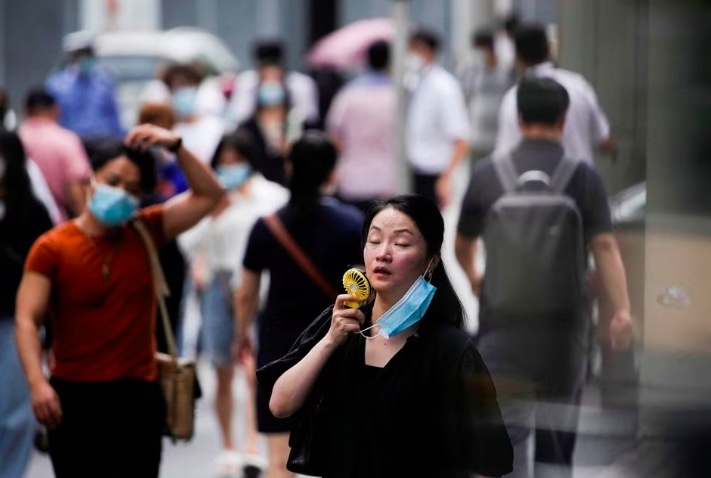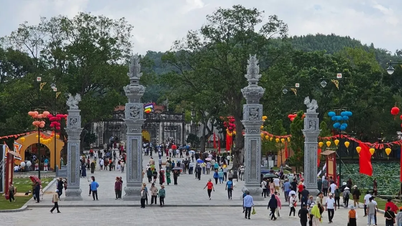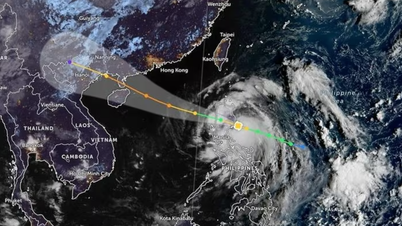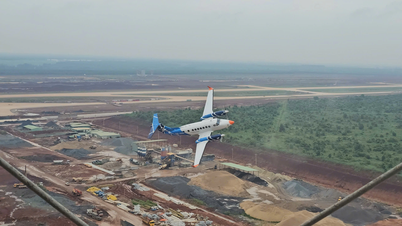Climate science experts from the University of Bristol say heat stress could reach a point where all humans, even the fittest and most well-adapted, would not be able to survive.
 |
| Temperatures hit a record 45.4 degrees Celsius in Bangkok, Thailand, on April 21. Photo: Reuters |
According to Channel New Asia, this year, even before summer begins in the Northern Hemisphere, temperature records have been continuously broken.
Spain, for example, recorded temperatures of 38.8°C, which is unusually high even at the height of summer. South and Southeast Asia in particular have been hit by the heatwave, with all-time record temperatures recorded in countries such as Vietnam and Thailand, with temperatures of 44°C and 45°C respectively.
In Singapore, a more modest record was also broken, with temperatures reaching 37 degrees Celsius. And in China, Shanghai just recorded its hottest May day in more than a century, at 36.7 degrees Celsius.
Experts say climate change may have caused higher temperatures, but heatwaves of this intensity are having very different impacts, depending on factors.
Weather and physiology
The recent heatwave in Southeast Asia may be remembered for its level of heat stress – the stress that heat puts on the body. Heat stress is primarily caused by temperature, but other weather-related factors – such as humidity, radiation and wind – are also important.
Our bodies absorb heat from the air around us, from the sun, or from processes like digestion and exercise. To cope with heat waves, the human body loses some heat. Some of the heat is released into the air and some is released through breathing. But most of the heat is lost through perspiration, because when sweat evaporates from the skin, it takes energy from the skin and the air around the body in the form of “latent heat”.
Meteorological factors influence all of this. For example, lack of shade exposes the body to direct heat from sunlight, while higher humidity reduces the rate at which sweat evaporates from the skin. High humidity also increased the risk to humans during recent heatwaves in Southeast Asia, which is already an extremely humid part of the world .
Limits of heat “stress”
 |
| A woman uses a fan in Shanghai, China during a record heatwave. Photo: Reuters |
Underlying health conditions and other physical conditions can make some people more susceptible to heat stress. However, heat stress can reach a point where everyone – even healthy and well-adapted people – cannot survive even moderate exertion.
There is a way to assess heat stress – called wet bulb globe temperature (WBGT) – which represents the heat stress an individual is exposed to.
Under prolonged heatwave conditions, the temperature is approximately equivalent to 39°C combined with 50% relative humidity. This limit may have been exceeded in some places during the recent heatwave across Southeast Asia.
In less humid places further away from the tropics, the humidity will be lower and therefore the WBGT will be lower and much less dangerous.
The April heatwave in Spain, with a maximum temperature of 38.8°C, had a WBGT value of only about 30°C. During the 2022 heatwave in the UK, temperatures exceeded 40°C, humidity was below 20%, and the WBGT value was about 32°C.
Scientists used climate data to create a map showing heat stress levels around the world. The study highlighted that the regions most at risk of exceeding the highest WBGT thresholds are hotspots – including India and Pakistan, Southeast Asia, the Arabian Peninsula, equatorial Africa, equatorial South America and Australia. In these regions, heat stress thresholds are being exceeded with increasing frequency with greater global warming.
In fact, humans are very vulnerable to temperatures below the threshold of survival. That is why we see significantly higher death tolls during heat waves in cooler places.
Furthermore, global analyses often fail to capture extremes caused by microclimatic processes. For example, a particular neighborhood within a city may retain heat more efficiently than its surroundings, or may be ventilated by cool sea breezes, or lie in the “rain shadow” of a local hill, making it less humid.
Ability to change and adapt
 |
| Heatwaves of similar intensity can have very different impacts depending on factors such as humidity. Photo: iStock |
Tropical regions typically see less variation in temperature. For example, Singapore lies almost on the equator and has a maximum temperature of around 32°C year-round, while London’s typical maximum temperature in mid-summer is just 24°C. Yet London has recorded higher record high temperatures (40°C compared to 37°C in Singapore).
Given that regions like Southeast Asia have always had high levels of heat stress, perhaps it suggests that people would be well adapted to cope with this weather phenomenon.
Initial reports suggest that the high heat stress of the recent heatwave has led to a surprising number of direct deaths. However, there has been no definitive report of deaths from indirect causes.
Even without climate change, natural weather variability can create heatwaves that break local records, and even approaching physiological limits can be a very risky move, the study highlights.
According to Tin Tuc Newspaper
Source link



![[Photo] Prime Minister Pham Minh Chinh chairs the Government's online conference with localities](https://vphoto.vietnam.vn/thumb/1200x675/vietnam/resource/IMAGE/2025/10/5/264793cfb4404c63a701d235ff43e1bd)



![[Photo] Prime Minister Pham Minh Chinh launched a peak emulation campaign to achieve achievements in celebration of the 14th National Party Congress](https://vphoto.vietnam.vn/thumb/1200x675/vietnam/resource/IMAGE/2025/10/5/8869ec5cdbc740f58fbf2ae73f065076)











































![[VIDEO] Summary of Petrovietnam's 50th Anniversary Ceremony](https://vphoto.vietnam.vn/thumb/402x226/vietnam/resource/IMAGE/2025/10/4/abe133bdb8114793a16d4fe3e5bd0f12)

![[VIDEO] GENERAL SECRETARY TO LAM AWARDS PETROVIETNAM 8 GOLDEN WORDS: "PIONEER - EXCELLENT - SUSTAINABLE - GLOBAL"](https://vphoto.vietnam.vn/thumb/402x226/vietnam/resource/IMAGE/2025/7/23/c2fdb48863e846cfa9fb8e6ea9cf44e7)





































Comment (0)